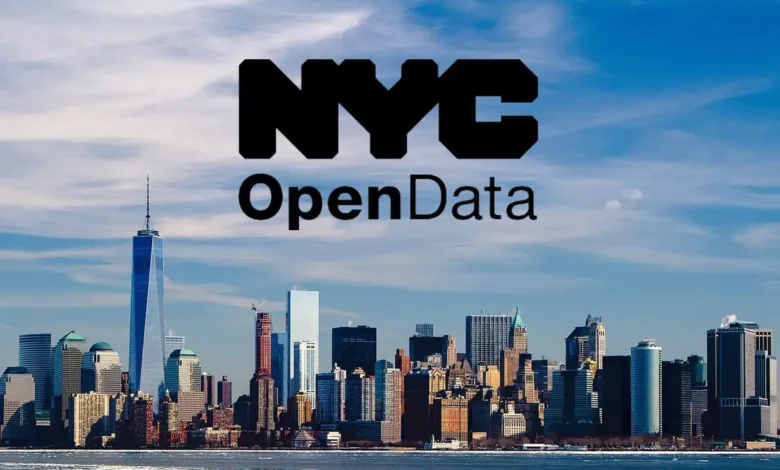NYC Open Data: Your Complete Guide to Accessing Free Public Data

Access to information has never been more important, and NYC Open Data is leading the way. As one of the most extensive and dynamic open data platforms in the world, NYC Open Data provides free access to thousands of datasets generated by New York City’s government agencies. It empowers citizens, researchers, businesses, and developers to use data creatively and build a better city for everyone.
The open data movement continues to grow globally, with initiatives like the World Bank Open Data and AWS Open Data Registry setting examples. NYC Open Data stands proudly among these efforts, offering unparalleled access to information that can help improve public services, enhance transparency, and inspire innovation. Exploring NYC Open Data is like unlocking a digital map of the city’s heartbeat.
What is Open Data and Why Does It Matter?
Open data refers to data that anyone can freely access, use, modify, and share without restrictions. In order to be considered open data, databases must provide access rights so that they can be distributed and reused by anyone. This concept is essential for encouraging transparency, citizen engagement, and the development of new technologies.
Platforms like NYC Open Data show how open data can change the way cities function. From helping students complete research projects to enabling businesses to launch innovative apps, the benefits are endless. Open data NYC serves as a living example of how making information freely available can fuel economic growth, strengthen democracy, and promote equality.
Exploring the NYC Open Data Portal
The NYC Open Data portal is designed to be user-friendly, welcoming visitors of all skill levels. With datasets available across a wide range of categories such as health, education, transportation, and public safety, users can find information that impacts every aspect of city life. Agencies like the Taxi and Limousine Commission also contribute valuable TLC Open Data for public use.
Browsing the portal is simple, with search functions, filters, and dataset previews making it easy to find what you need. You can download open data sets in formats like CSV, connect through APIs, or even use integration tools such as Open Data Kit. NYC Open Data is not just a database; it is a dynamic platform encouraging exploration and creativity.
Key Features That Make NYC Open Data Stand Out

One of the highlights of NYC Open Data is its commitment to accessibility and innovation. The platform is constantly updated with new datasets, ensuring that users always have access to the latest information. Features like visualisation tools, data dictionaries, and tutorials make it easy to understand even complex datasets without needing advanced technical skills.
NYC Open Data also connects with larger platforms like AWS Open Data, allowing developers and researchers to merge city-specific data with global datasets. Whether you are working with data from the Maxar Open Data Program or building models with open data sources from around the world, NYC Open Data gives you a strong foundation to start from.
How to Access and Use NYC Open Data Effectively
Accessing NYC Open Data is straightforward. Start by visiting the portal, where you can search by category, agency, or keyword. Once you find a dataset that interests you, you can view, filter, and download it for free. APIs are available for those who want to integrate NYC Open Data directly into their applications or websites.
Using NYC Open Data effectively means knowing what questions you want to answer. Whether you are analysing transportation trends, visualising health outcomes, or studying environmental changes, having a clear goal will help you make the most out of the open data NYC provides. Combining these datasets with information from resources like the AWS Open Data Registry or the TXDOT Open Data Portal can create powerful insights.
Comparing NYC Open Data to Other Platforms
While NYC Open Data is a leading local platform, there are many other open data initiatives worth exploring. World Bank Open Data provides a global perspective, offering information on topics like economics, health, and education. Meanwhile, USAC Open Data focuses on communications and infrastructure, and DC Open Data serves the Washington, D.C. area with rich civic datasets.
Platforms like NIFC Open Data specialise in specific fields, offering wildfire data critical for emergency planning. Similarly, AWS Open Data Registry hosts massive datasets useful for machine learning, climate research, and genomics. Each platform, including NYC Open Data, plays a unique role in advancing the open data revolution, giving users powerful tools to drive innovation and informed decision-making.
Challenges in the Open Data World
Despite the many benefits, there are challenges when it comes to maintaining open data platforms. Ensuring that datasets are accurate, up-to-date, and presented in a user-friendly manner requires ongoing effort. Privacy is another concern; while NYC Open Data ensures that no personally identifiable information is released, careful data governance is essential.
Additionally, not all citizens may have the digital literacy required to use open data effectively. NYC Open Data recognises this issue and offers training, workshops, and support events like Open Data Week to educate the public. Overcoming these challenges is crucial for the long-term success and inclusivity of open data initiatives around the world.
The Future of NYC Open Data and Open Data Initiatives
Looking ahead, NYC Open Data is poised to grow even more influential. As technologies like AI, big data analytics, and IoT become more prominent, the value of open data will only increase. Expanding partnerships with platforms like AWS Open Data and further enhancing access through mobile-friendly portals are just a few ways NYC Open Data will evolve.
Public engagement will also continue to be critical. By encouraging more community participation, hosting events, and improving data literacy, NYC Open Data ensures that everyone — from tech enthusiasts to concerned citizens — can benefit. Open data NYC is setting the stage for a smarter, more connected future, where information empowers everyone.
Conclusion
NYC Open Data is much more than a city project — it is a vision for a future built on openness, collaboration, and innovation. By offering free access to valuable information, it transforms how people interact with their city and inspires new ways to solve challenges and seize opportunities.
If you have never explored NYC Open Data, now is the perfect time. Dive into its wealth of information, connect it with resources like the World Bank Open Data or Maxar Open Data Program, and discover how open data can fuel your ideas, projects, and passions. NYC Open Data is your gateway to a smarter, more transparent, and more vibrant world.
FAQs
What is NYC Open Data and what kind of information does it provide?
NYC Open Data provides free public access to thousands of datasets created by New York City’s government agencies, covering topics like health, education, transportation, safety, and more.
How can I use NYC Open Data for my project or research?
You can search, download, and analyse datasets directly from the NYC Open Data portal. APIs and integration tools are also available for building apps and conducting large-scale research.
Are there any costs associated with accessing NYC Open Data?
No, NYC Open Data is completely free for public use, encouraging innovation and community engagement without any barriers.
What tools can help me analyse NYC Open Data?
Tools like Open Data Kit, AWS Open Data platforms, and visualisation software can help you effectively work with datasets from NYC Open Data.
How does NYC Open Data protect personal privacy?
All datasets are carefully reviewed to ensure no personal or sensitive information is shared, following strict data governance policies.
You may also read: Overview of eBay US Marketplace





